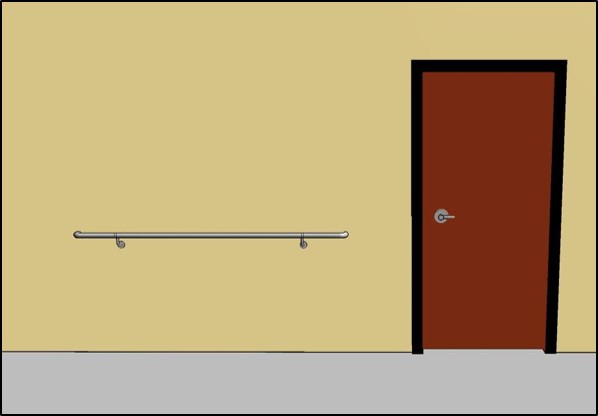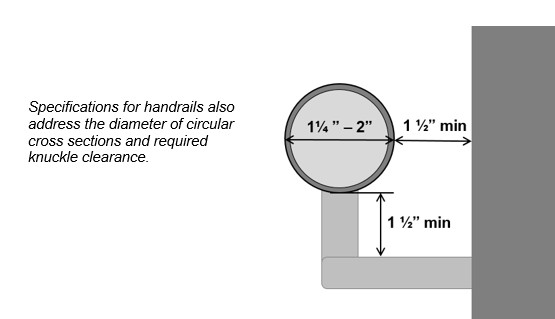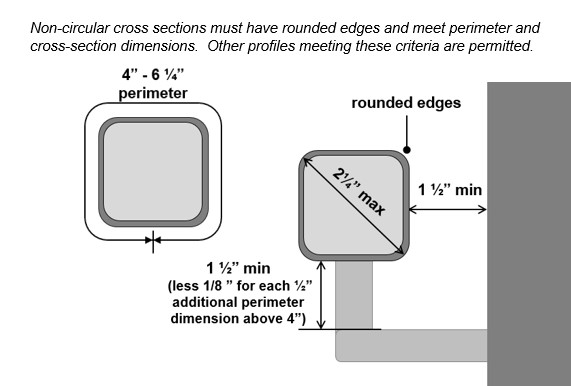Handrails Along Walking Surfaces [§403.6, §505]
Handrails are required at ramps with a rise greater than 6” and at stairs that are part of a means of egress, but not at other locations. Where handrails are provided along other portions walking surfaces, they must comply. (Handrails provided in elevator cabs or on platform lifts are not required to comply).
Handrails along Walking Surfaces
-
34” – 38” high measured to the top of the gripping surface.
-
Gripping surface must be continuous the full length and top and sides cannot be obstructed.
-
The bottom gripping surface can be obstructed up to 20% of the length (or along the full entire length when part of crash rails or bumper guards).
-
No sharp or abrasive elements on gripping surfaces or adjacent surfaces, and no rotation within fittings.
Surface requirements and clearances facilitate a power grip along the length of handrails. Handrails can have circular or non-circular cross-sections, but must have rounded edges. The gripping surface and adjacent surfaces must be free of abrasive or sharp elements.




User Comments/Questions
Add Comment/Question